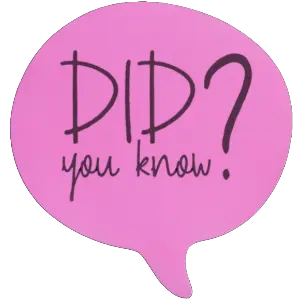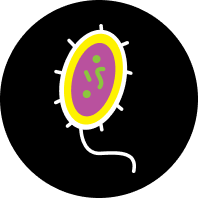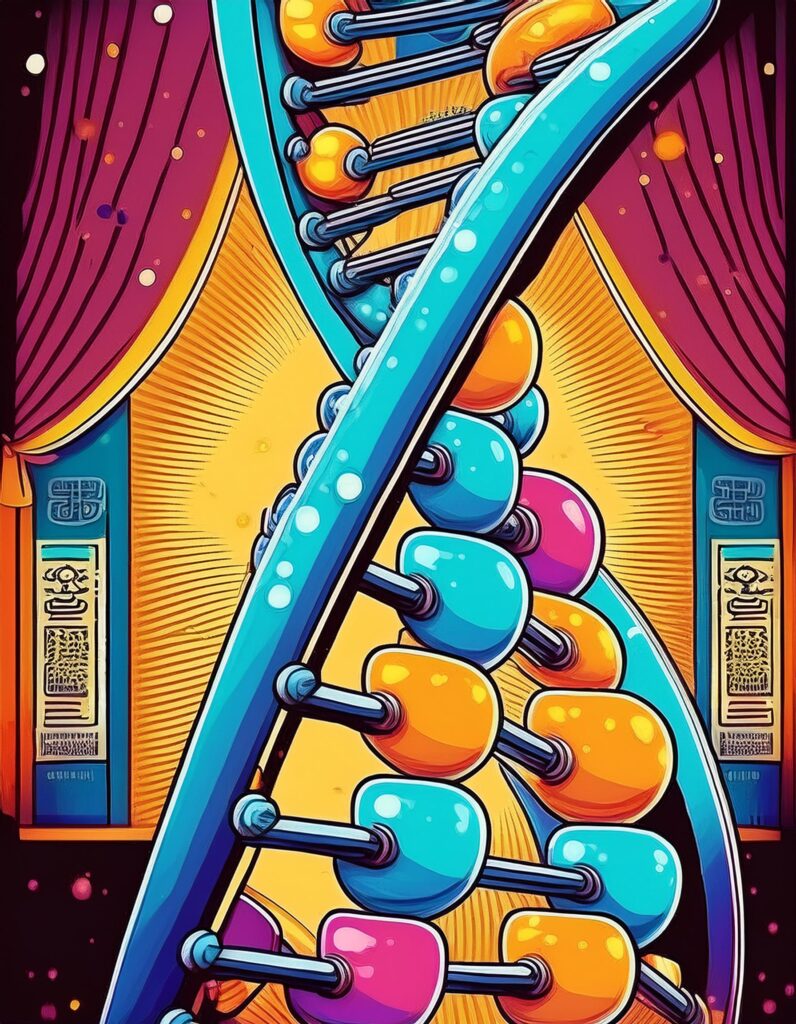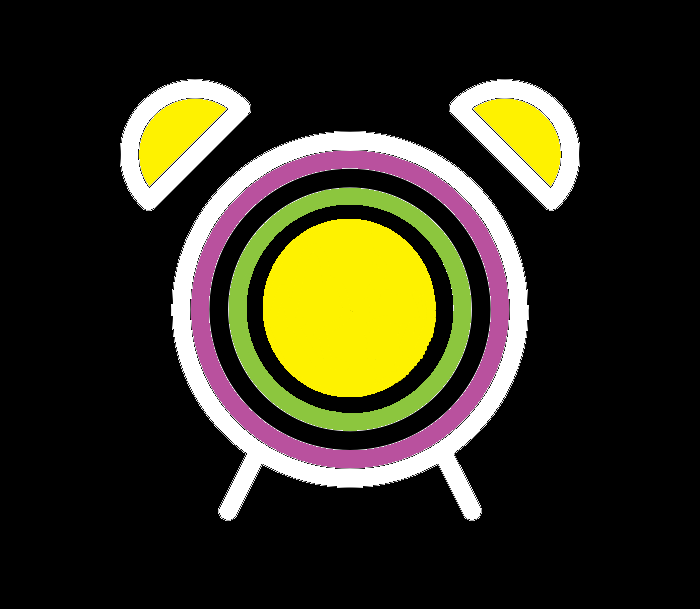Sweet DNA Discovery | A Fun Edible Biology Experiment for Kids
Can your kids eat their science experiment?
With this edible DNA experiment for kids, they absolutely can! Perfect for curious young scientists (and snack lovers), this hands-on activity turns candy and toothpicks into a colorful model of DNA. It’s a deliciously creative way to introduce big science ideas like genetics and molecular biology—without the overwhelm. Whether you’re homeschooling, filling a rainy afternoon, or just looking for an easy biology experiment for kids, this one’s a hit.
A Tasty Introduction to DNA
This edible DNA experiment for kids makes learning biology exciting and accessible. Using soft candy, licorice, and a few basic supplies, your child will build a tasty double helix while learning about DNA’s role in life and heredity. It’s a playful, memorable way to explore what makes us us—and have a little fun doing it.
This easy biology experiment for kids is especially great for introducing scientific vocabulary and ideas through sensory learning (and a few sweet rewards).
Why This Experiment Matters
This fun genetics activity for kids gives them a tangible way to understand something invisible but vital—DNA! It connects real science to everyday life, from why we look like our parents to how scientists solve crimes or create medicine. Starting with this easy biology experiment for kids lays the foundation for lifelong scientific curiosity.
Quick Facts
- Time Needed: Short (about 15–30 minutes)
- Difficulty Level: Easy
- Best For: Ages 6–12 (elementary school kids)
- Science Type: Biology
- Mess Level: Low (I’m sure the kids will tidy up the candy)
- Materials Needed:
- Soft candies
- Toothpicks
- Licorice ropes
What the Experiment Looks Like
In this fun genetics activity for kids, your child builds a model of DNA using candy to represent each base pair. As they connect the pieces, twist the structure, and see the double helix come to life, they’ll start to understand how DNA is organized. Best of all? It’s edible!
This is a great easy biology experiment for kids that combines learning and play in the most satisfying (and snackable) way.
What You’ll Learn
- DNA structure and base pairing
- How genetics determine traits
- Intro to molecular biology
- Observation, pattern recognition, and motor skills
- Real-world uses of DNA in science and medicine
What’s the Science?
DNA is like nature’s instruction manual. It tells our bodies how to grow, heal, and function. In this edible DNA experiment for kids, the colorful candies stand in for the four DNA bases (A, T, C, and G), showing kids how these “letters” pair up in a very specific way.
Just like puzzle pieces or LEGO bricks, the DNA bases connect in patterns that make up the code for all living things!
Why This Matters
This fun genetics activity for kids gives them a tangible way to understand something invisible but vital—DNA! It connects real science to everyday life, from why we look like our parents to how scientists solve crimes or create medicine. Starting with this easy biology experiment for kids lays the foundation for lifelong scientific curiosity.
Fun Fact Corner

If you unraveled all the DNA from one person, it could stretch from the Earth to the sun and back—over 600 times!
Humans share 60% of their DNA with bananas. Yep, bananas!
Ask your child: “If DNA is a code for building you, what do you think would happen if we could read or even rewrite that code?“
Try It Out!
Looking for more science activities that are as educational as they are fun? This edible DNA experiment for kids is a perfect place to start. Save this page, share it with a friend, and check out more easy biology experiments for kids at arecipeforscience.com!
Share your results with us on social media @arecipeforscience


Looking for more edible fun science activities? Check out our Does Color Affect Taste? or explore our full collection of hands-on experiments at A Recipe for Science!
Behind the Gummy Genes | Understanding the Biology Behind the Fun
This edible DNA experiment for kids might feel like play—but it’s packed with real science! By exploring how DNA works, kids are stepping into the world of biology, genetics, and molecular biology in a way that sticks (and tastes great). Here’s how this tasty experiment connects to big scientific ideas.

What is Biology?
Biology is the study of life. From animals to plants to tiny microorganisms, biology helps us understand how living things grow, change, and survive. It’s like learning the rules behind nature’s biggest game. Every time your child explores an easy biology experiment for kids, they’re learning how life works at every level.
Check out more Biology experiments.
Why Biology Matters in Everyday Life
Biology impacts everything from health to food to the planet. It helps us:
- Understand how our bodies function
- Explore how diseases are treated
- Study ecosystems and wildlife
- Improve farming and nutrition
- Learn what makes each living thing unique
From brushing your teeth to eating a banana, biology explains the “why” behind daily life.
Branches of Biology
Chemistry is divided into several key areas, each focusing on different types of matter and reactions:
Botany – study of plants
Zoology – study of animals
Ecology – study of ecosystems
Microbiology – study of microscopic life
Genetics – study of heredity and DNA
Molecular Biology – study of life at the cellular and molecular level
This edible DNA experiment for kids falls under genetics and molecular biology—where scientists decode the instructions inside every cell.
Genetics & Molecular Biology
Genetics explores how traits like hair color or dimples are passed down through DNA. It’s the blueprint of life. Molecular biology looks even closer at how DNA and proteins work together to keep our bodies running smoothly.
In this fun genetics activity for kids, building a DNA model helps kids understand how that “blueprint” is put together—and why it matters.
Ask Your Kids:
“What would it be like if you could ‘edit’ your DNA like a story? Would you give yourself superpowers or change your hair color?”
Fun and Relatable Examples
- DNA is like a recipe book—telling your body how to build you
- Even though we all have DNA, no two people (except identical twins) have the exact same code
- You share more DNA with a banana than you might expect!
Why It’s Relevant to the Experiment
The edible DNA experiment for kids takes something invisible and makes it visible, touchable—and edible! It helps children visualize the shape and structure of DNA while sparking curiosity about how our bodies are built. It’s a perfect mix of science, creativity, and fun—everything a great easy biology experiment for kids should be.
Want more ideas like this fun genetics activity for kids? Browse our entire collection of science experiments that make learning hands-on, exciting, and easy to do at home!
Check out more Biology experiments.

Candy DNA Model
Ingredients
INSTRUCTIONS
-
Click here for the full experiment details. Checkout the main website: Little Bins for Little Hands
-
Get experimenting!
-
Feed your knowledge.
-
Come back for more recipes for science!
Note
Definitely get creative when choosing your candies - tailor it to your kiddies' favorites. We always have marshmallows and food coloring, which makes for a quick substitute for us. This site offers both a great printable companion for the experiment and information about DNA.





